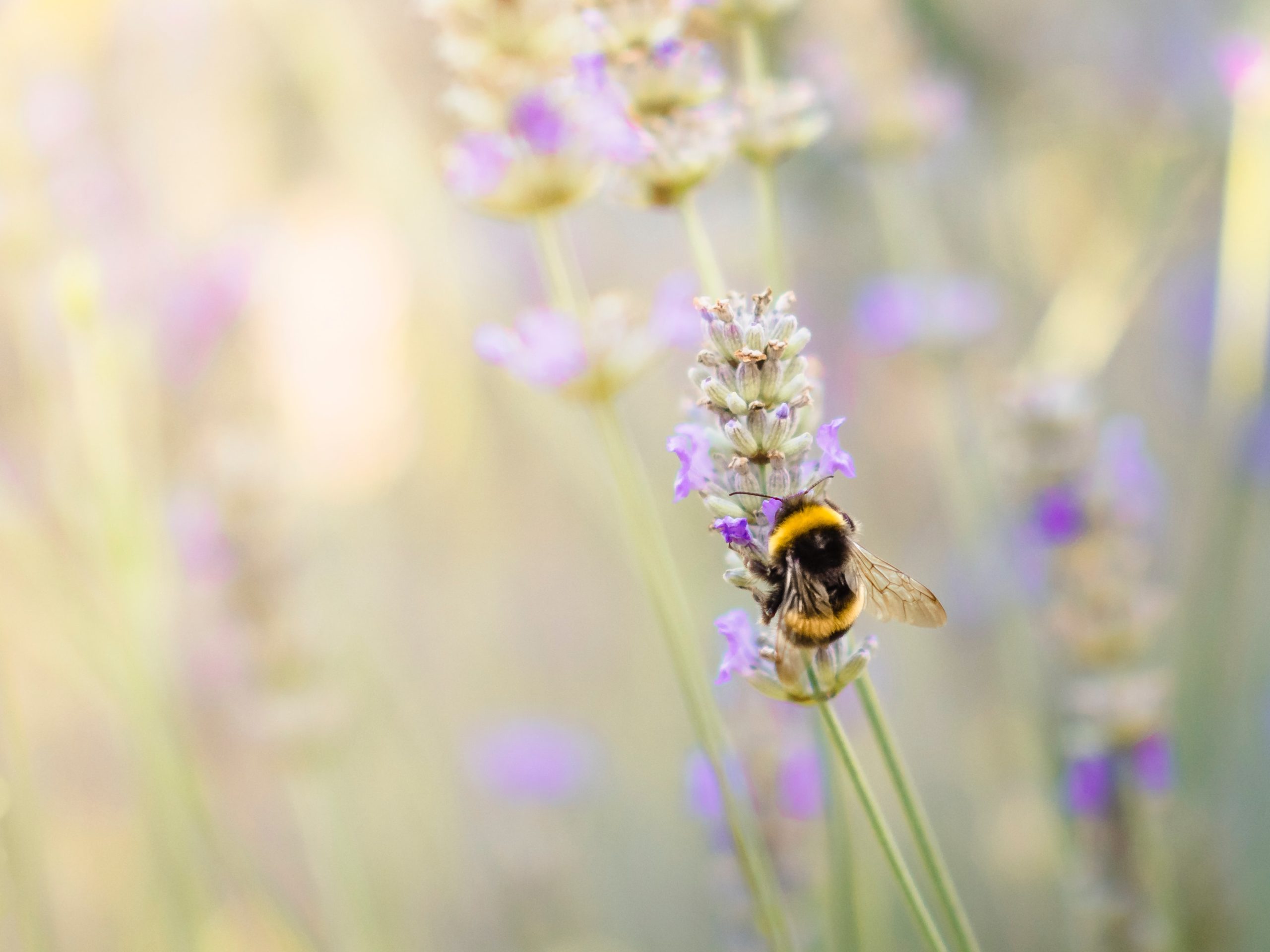Why attract bumble bees to your vegetable garden?
Bumble bees are pollinators—a must-have for a healthy garden.
Some vegetables that aren’t self-pollinators, like pumpkins, squash, and cucumbers, won’t produce fruit without the help of a pollinator traveling between the male and female flowers on the different plants.
Even self-pollinators that have the male and female parts on the same flower (like tomatoes and strawberries) still need the help of pollinators like bumble bees to produce fruit.
And good news for the stinger-scared among us: bumble bees are less aggressive pollinators than wasps or hornets, stinging only out of self-defense or when their nest is disturbed (in which case, watch out). In fact, male bumble bees don’t even have stingers.
Here are 6 ways to attract bumble bees to your vegetable garden.
How to Attract Bumble Bees to Your Vegetable Garden
1. Provide ground cover.
Bumble bees love a good break in the shade just like the rest of us.
Make sure you’re providing ground cover—creeping plants that create a “carpet”—in your garden to give these buzzing friends a respite from the harsh summer sun.
Green and gold (Chrysogonum virginianum), Bugleweed (Ajuga reptans), Japanese pachysandra (Pachysandra terminalis), Creeping phlox (Phlox stolonifera), and moss phlox (Phlox subulata) are all great ground cover options.
Additionally, creeping herbs like lemon thyme (Thymus citriodorus) or red thyme (Thymus praecox ‘Coccineus’) are fan favorites for bumble bee ground cover.
Bonus: other pollinators will appreciate the ground cover, too!
2. Give them water.
Hydration is the name of the summer game for any creature, including bumble bees. If you see a sluggish bumble bee, this could be a sign it’s dehydrated.
Do your bumble bee friends a favor by providing a shallow dish of water for them to sip from.
3. Choose flowers bumble bees love.
Did you know… ?
While bees are colorblind to red, bees can see colors that we humans can’t even see—the ultraviolet spectrum, to be technical. While we may admire the vibrancy of a particular flower, that flower also has additional colors on the ultraviolet spectrum that we can’t see, but that bumble bees can see.
When choosing flowers to attract bumble bees, go for colors they love: blue, purple, pink, and yellow.
Additionally, bumble bees favor perennial plants over annuals, since they tend to have more nectar.
4. Plant native plants.
In addition to choosing flower colors that bumble bees love, you should also add native plants to your garden.
Remember—before we humans started introducing new plant species to regions, our ecosystem was finely balanced with plants meant for that particular area. Bumble bees are naturally drawn to plants native to its habitat.
Here are 5 plants native to Tennessee.
5. Say no to chemical pesticides.
Chemical pesticides are the BIGGEST danger to bumble bee health—and a major culprit to the huge decline in bee population across the world.
At Stoney Creek Farm, we avoid chemical pesticides altogether by using natural pest control methods, like beneficial insects, to keep our plants healthy.
Beneficial insects are natural predators to pests, but they are non-harmful to your plants. With a few intentional gardening decisions like adding plants that beneficial insects like, you can attract these do-good bugs to your garden, foregoing the need for chemical pesticides.
Learn more about 12 beneficial insects that control pests here.
6. Stagger your blooms.
Stagger your blooms throughout the growing period to attract bumble bees all season long.
This, of course, requires some planning to ensure a consistent sequence of blooms.
Browse a few popular spring, summer, and fall blooms below.
Spring blooming flowers include:
- Creeping phlox
- Primrose
Summer blooming flowers include:
- Hydrangea
- Bee balm
- Black Eyed Susan
- Crape Myrtle (we love these at our farm)
- Coneflowers
Fall blooming flowers include:
- Sunflowers (late summer through fall)
- Zinnias (late summer through fall)
- Goldenrod
- Yarrow
Living sustainably is all about gardening naturally—and that means attracting and taking care of important pollinators like bumble bees.
We wish you great gardening success this year!
RELATED READING:


